How do you choose the best perennials from so many gorgeous options? We picked these 20 for their remarkable flower power and reliability.
20 Best Perennials That Bloom Year After Year
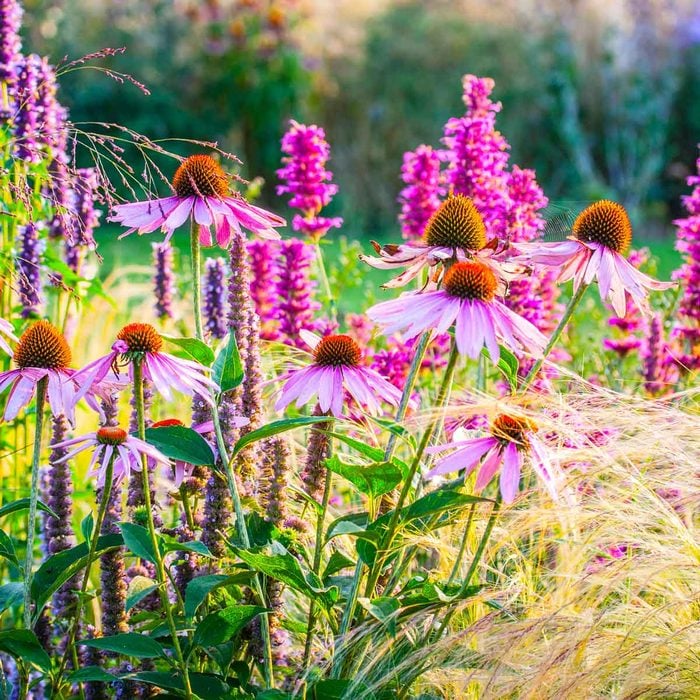
Choosing the Best Perennials
When garden centers are filled with so many stunning perennials, how do you narrow your choices? Start by looking for those that will thrive in your growing conditions — ones you know will survive the winter in your growing zone, enjoy the sun they’ll receive in your garden beds and draw in the pollinators.
We’ve included those important details in the descriptions of these 20 standouts. The perennials that made our list should be easy to find at your local garden centers throughout the seasons.

Catmint
Few hardy perennials offer so much beauty for so little effort as catmint, which pumps out blooms that pollinating bees and butterflies adore every year in late spring. A quick shearing of the spent flowers will help it pop back into bloom from midsummer to fall. Full sun and well-drained soil are a must for this plant to thrive. It’s best in U.S. Department of Agriculture Plant Hardiness Zones 3 to 8.
Despite its common name, catmint (Nepeta) is not a type of mint (Mentha) and it’s well-behaved in the garden. Look for dwarf varieties like ‘Purrsian Blue’ (shown here) and ‘Cat’s Pajamas’ to create a tidy edging for your vegetable garden or flower bed.
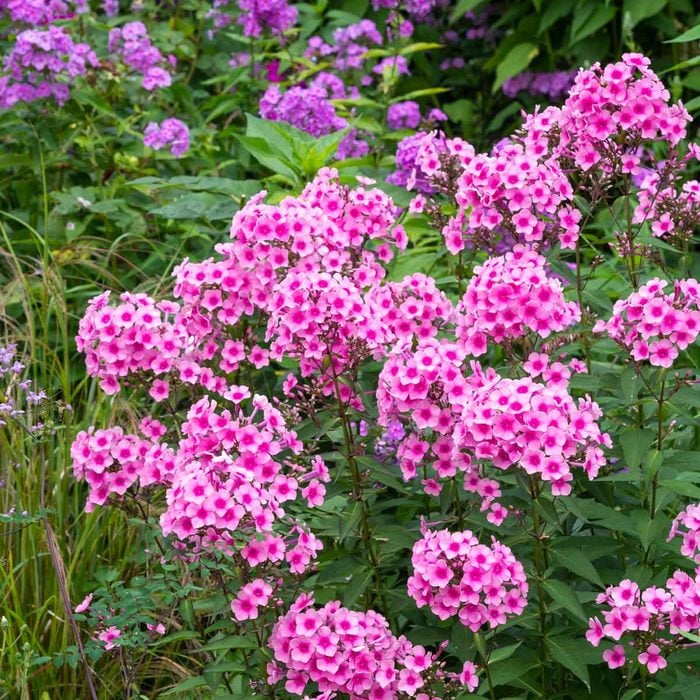
Tall Garden Phlox
Tall garden phlox is a classic cottage garden perennial that adds height and draws butterflies to sunny gardens in Zones 3 to 8. Many stand hip-high and bear large, fragrant clusters of pink, red, purple or white flowers from midsummer through late summer. While older cultivars tended to be plagued with powdery mildew, newer forms like ‘Glamour Girl’ and ‘Jeana’ are far more resistant.
Tall garden phlox grows and blooms in as little as four hours of sun, but you’ll find it’s happier when you plant it someplace even sunnier.
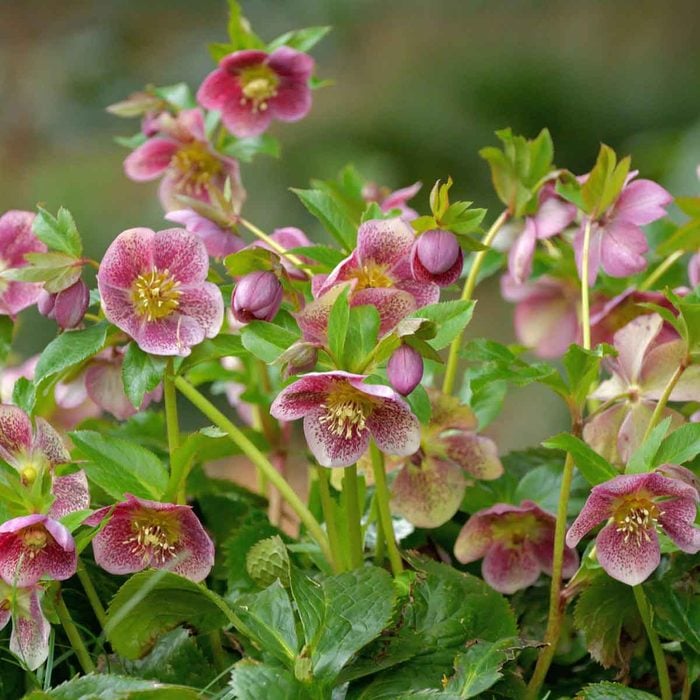
Hellebore
If deer tend to frequent your shade garden, hellebore is the perfect perennial for you. Four-legged creatures tend to leave these evergreen perennials alone, but their early spring blooms will be some of the first to welcome pollinating bees back into your garden. Hellebores also go by the common name Lenten Rose because they typically bloom around the Christian season of Lent.
Think of them as woodland plants. They are happiest in loose, organic soils and partial to full shade, even tolerating dry shade in Zones 4 to 9. Single and double-flowered forms are available. Here’s what you need to know about short perennial flowers.
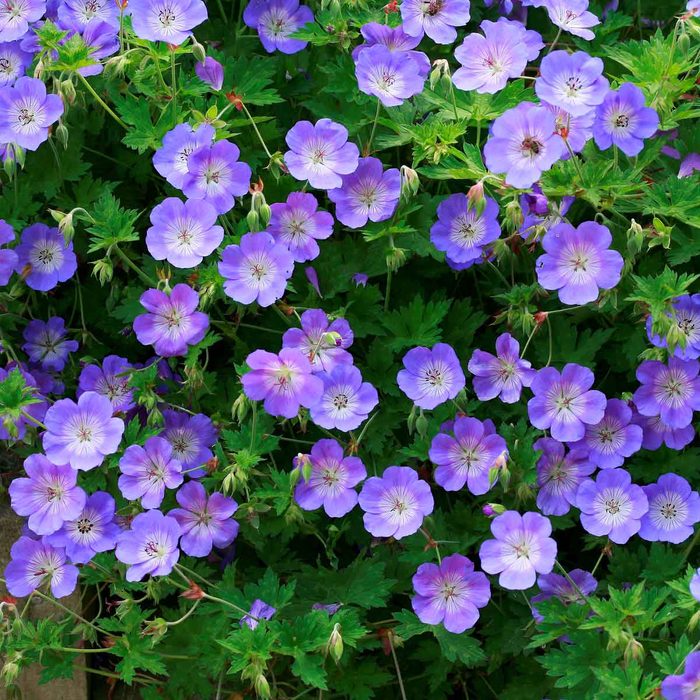
Cranesbill
Cranesbill varieties like ‘Rozanne’ (shown here) are ideal for low-maintenance landscapes because they thrive with little care other than watering. Although ‘Rozanne’ is hardy in Zones 5 to 8, you can also find perennial geraniums that survive cold Zone 3 winters.
Fragrant foliage keeps deer and rabbits from browsing, while pollinating bees enjoy their summertime blossoms. Most bloom for just a few weeks, but ‘Rozanne’ boasts an exceptionally long bloom time from early summer into fall. Plant perennial geraniums as a filler in the middle or front of the border where they will grow to form a wide, low patch in sun or part shade.
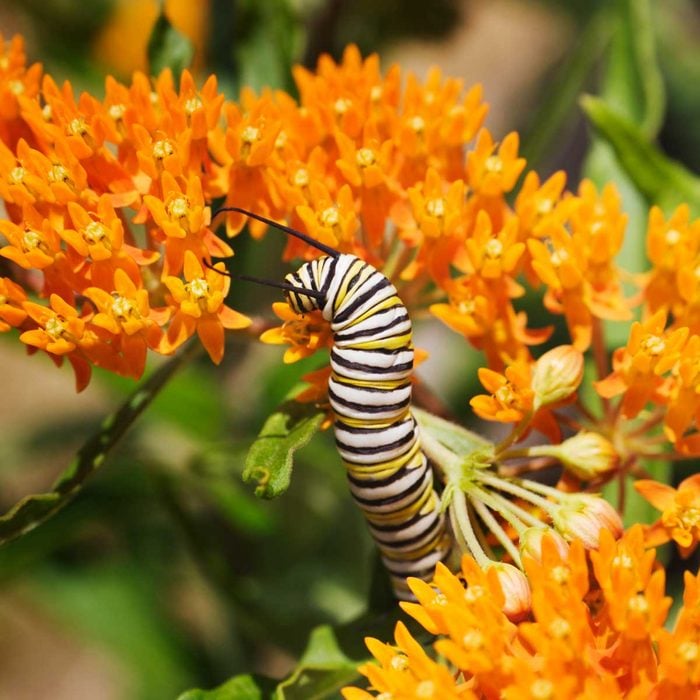
Butterfly Milkweed
There are several species of milkweed that support pollinators, but few perform as beautifully in perennial gardens as butterfly milkweed (Asclepias tuberosa), which flourishes across most of North America in Zones 3 to 9.
Although many types of milkweed spread by underground runners, this well-behaved species forms a knee-high clump of bright green foliage that’s topped with large clusters of fluorescent orange flowers for most of the summer.
Butterfly milkweed is a critical host for monarchs and other butterflies, and its flowers are an important food source for native bees. It thrives in all-day sun and well-drained, drier soils.
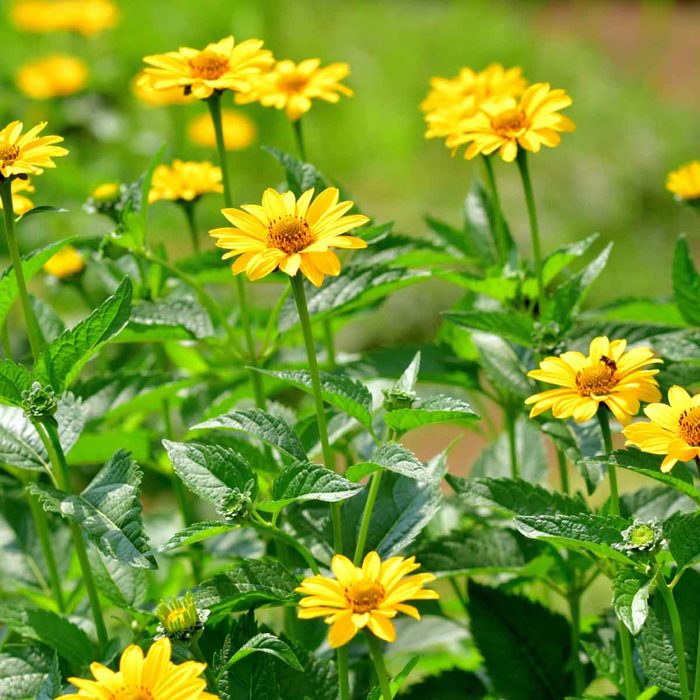
Oxeye Daisy
This cheerful native perennial is related to the common sunflower but is shorter and mounded in form. As it matures through the years, it forms a broad canopy of golden yellow, daisy-like blossoms that pollinating bees, butterflies and songbirds enjoy from midsummer to fall.
Newer forms like ‘Tuscan Sun’ have far greater resistance to powdery mildew which can sometimes plague older varieties. It looks right at home among other natives in sunny prairie-style gardens and thrives in challenging growing conditions, including heavy clay soil in Zones 3 to 9.
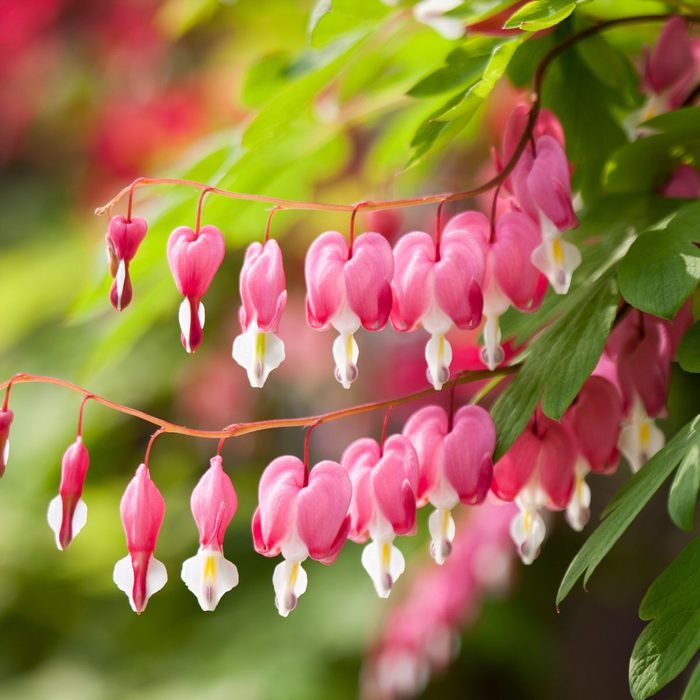
Old-Fashioned Bleeding Heart
No shade garden should be without this charming spring flowering perennial. Large, puffy heart-shaped blossoms dangle from its arching stems every year early in the season along with the late blooming tulips and crabapple trees. They carry with them the promise of a beautiful new year.
Old-fashioned bleeding heart is a shade-loving, woodland perennial for Zones 3 to 9 that thrives under tall tree canopies where the soil is rich and moist. Although it goes dormant once the heat of summer settles in, it returns reliably the following spring for a spectacular repeat performance.
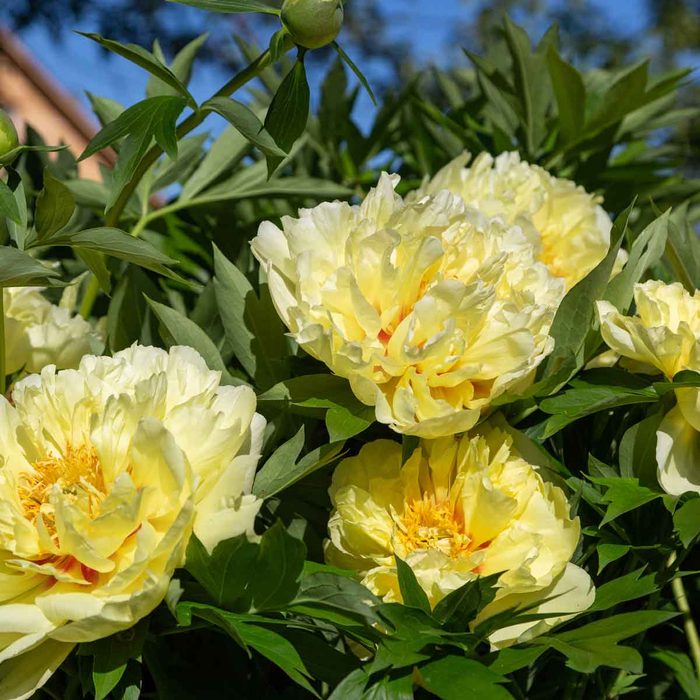
Intersectional Peony
Sweetly fragrant, lusciously petaled peonies have earned their place in gardens around the world as a beloved spring perennial. While garden and tree peonies are certainly beautiful when their buds first open, they can have a few drawbacks like weak stems and little resistance to powdery mildew.
Intersectional peonies like ‘Bartzella’ (shown here) are the gold standard, offering the best traits of all — large, fragrant blossoms in fruity colors, sturdy stems that won’t flop and deep-green foliage that stays healthy all season. Plant peonies in a really sunny spot where there is little root competition from trees in Zones 4 to 9.
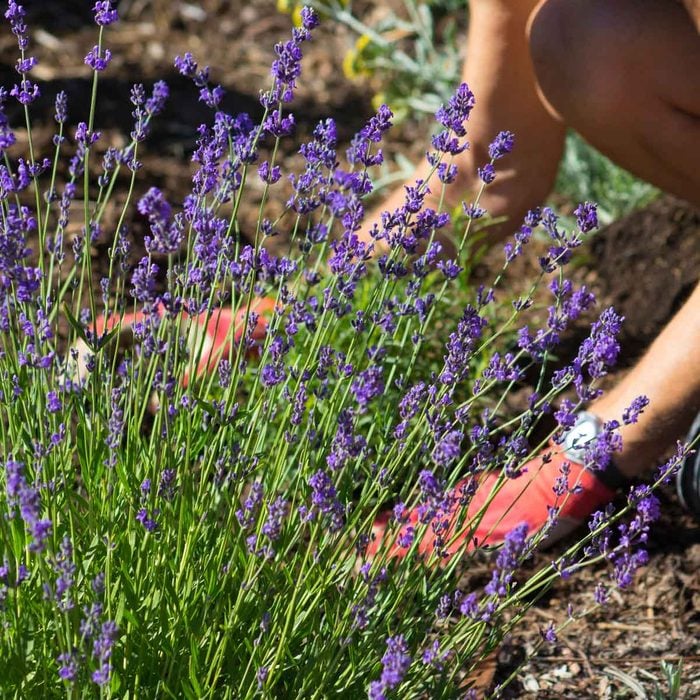
Lavender
Few perennials bear as distinctive a fragrance as lavender. The oil from its flowers is used in lotions and soaps, but did you know that its flowers are edible? Try picking a few to drop into a carafe of fresh lemonade or adding a teaspoon of them to your favorite shortbread cookie recipe.
Lavender thrives in sunny, hot, dry conditions and requires well-drained soil to overwinter well in Zones 5 to 9. Prune its stems back to six to eight inches in early spring so it can flush out beautifully with new foliage and flowers that will last all summer.
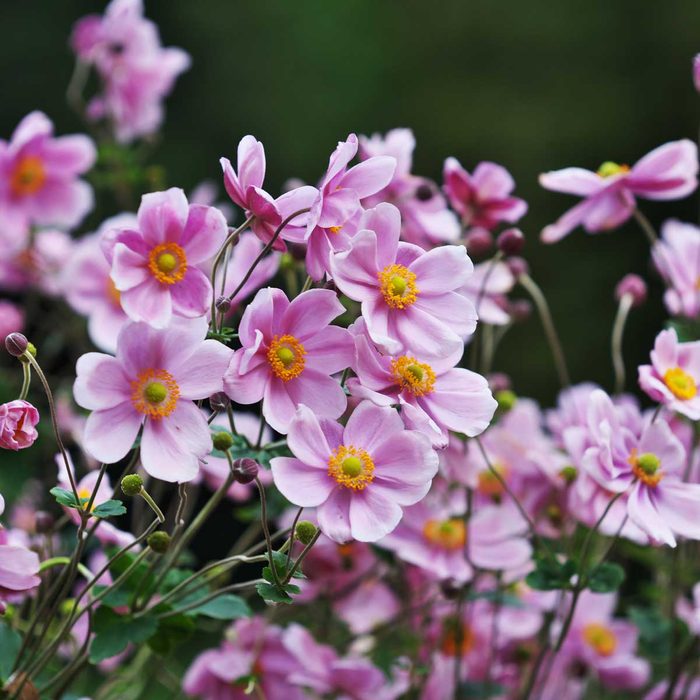
Japanese Anemone
Continue the flower show late into the season with Japanese anemones. They come into their prime beginning in late summer and often last until the first frost in Zones 4 to 8. A pollen-laden tuft in the center of each saucer-shaped blossom is a welcome food source for pollinating bees and butterflies.
Some varieties of Japanese anemones spread by short runners underground or by seed, while others tend to stay in more of a clump. It’s a good idea to give them a little elbow room in the garden so they can mature into a glorious mass of blooms that will be appreciated long after many other perennials are past their prime.
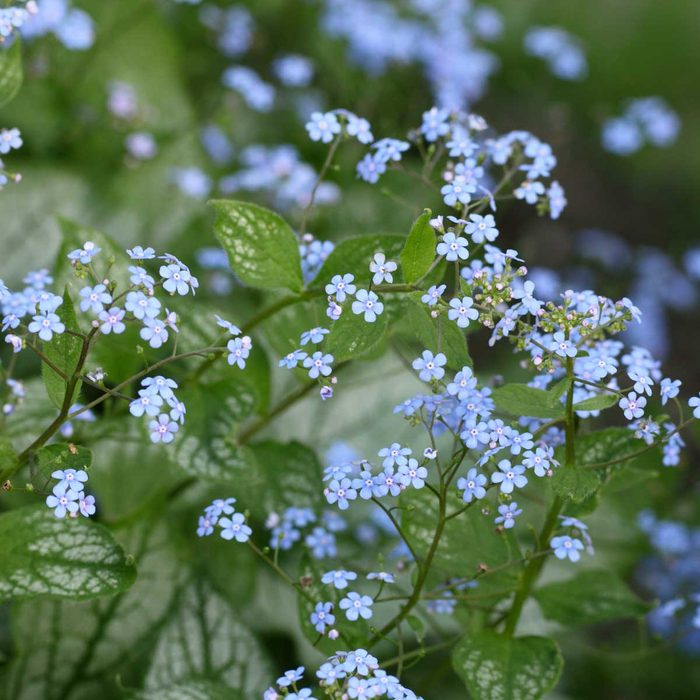
Brunnera
Pairing beautifully with ferns and hostas in the shade garden, heart-leaved brunnera is a delight in every season in Zones 3 to 8. A cloud of tiny, blue forget-me-not flowers appears in the spring on wispy stems above its silvery foliage. A quick trimming once the blooms are spent helps the plant flush out a new set of larger leaves that will form a fluffy mound.
The sandpaper-like texture of the leaves helps to keep deer and rabbits at bay, but you will find bumblebees enjoying its dainty blossoms early in the spring. Look for disease resistant cultivars like ‘Jack of Diamonds’ and ‘Queen of Hearts’ for foliage that remains attractive through the fall.
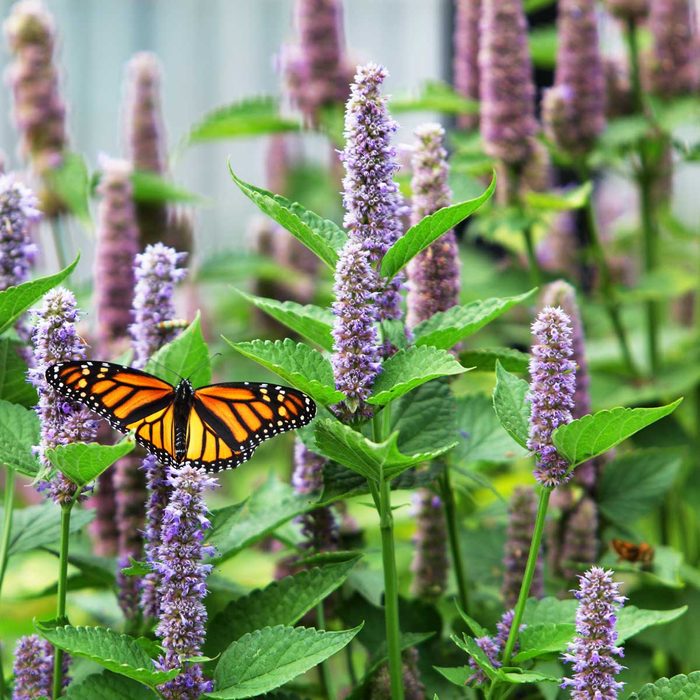
Anise Hyssop
If you have a sunny spot with well-drained soil and would love to draw more pollinators into your garden, try anise hyssop. Butterflies, hummingbirds and bees enjoy this long blooming perennial’s spiky, lavender-purple blossoms from midsummer into early fall. You might like its edible, minty leaves steeped in hot tea or cold lemonade.
There are multiple native species of anise hyssop in North America and their hardiness ranges greatly, so be sure to check the label closely before you buy. The type pictured here is perennial in Zones 5 to 8, but you can find others that grow in a cold Zone 3 or a hot Zone 10.
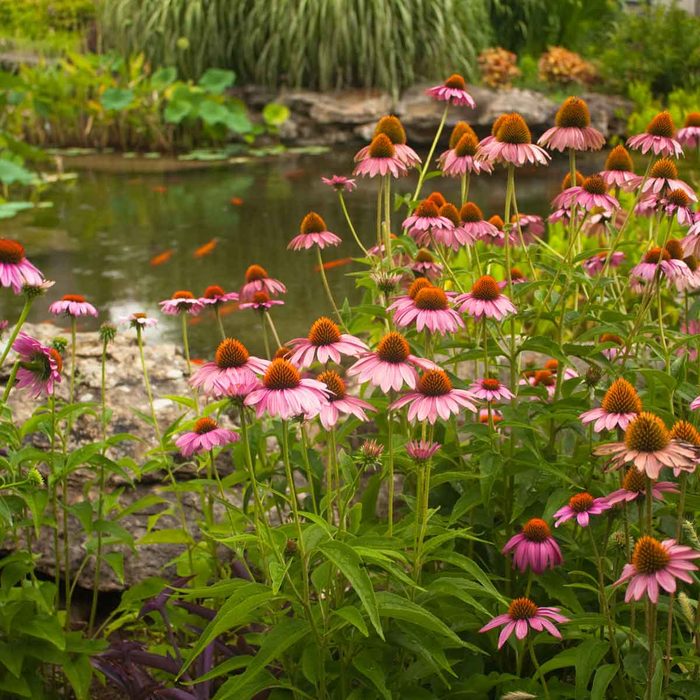
Coneflower
Classic native purple coneflowers (Echinacea purpurea) are a purple flower and delight for butterflies and songbirds when they burst into bloom every year in early to midsummer.
Although they can be short-lived, coneflowers will happily reseed on fertile ground, though the seedlings may bloom a different color than the original plant. You’ll also find hybrid varieties in brilliant shades of red, magenta and tangerine at your local garden center.
Well-drained soil is key to overwintering coneflowers successfully in Zones 3 to 9. They will grow in sandy or clay soils, but the roots cannot sit long in standing water without suffering. Keep this in mind when choosing the right spot for them to flourish.
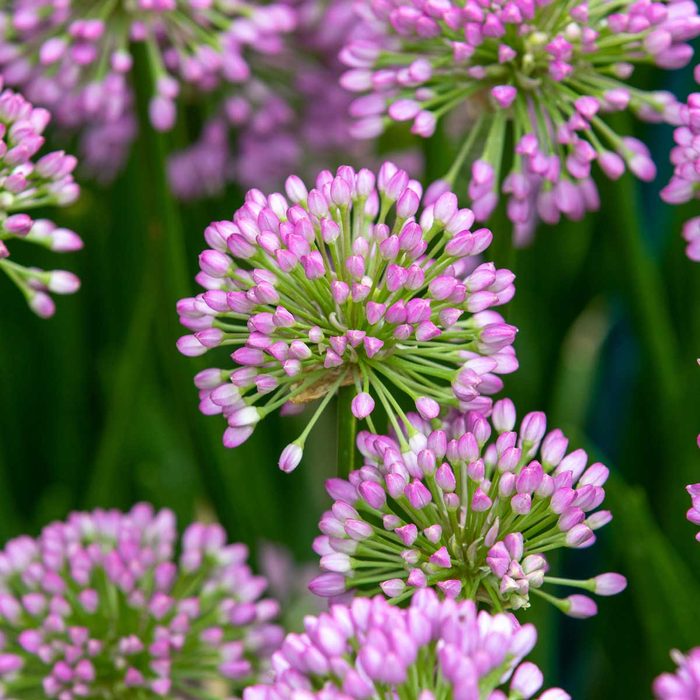
Ornamental Onion
Ornamental onions are a large class of plants that includes bulbs, herbs and ornamental perennials. ‘Millenium’ (shown here) is one you’ll find at garden centers right alongside daisies and other flowering perennials from spring into summer.
Perennial ornamental onions form a non-spreading clump of bright green, grass-like foliage and are topped with bright rosy-purple, lollipop-shaped flowers in midsummer in Zones 4 to 8.
Although the leaves do have a faint oniony scent and are technically edible, you’ll enjoy them more for their distinctive blossoms. Pollinating bees and butterflies will be frequent visitors when they are bloom, but thankfully deer and rabbits do not enjoy them.
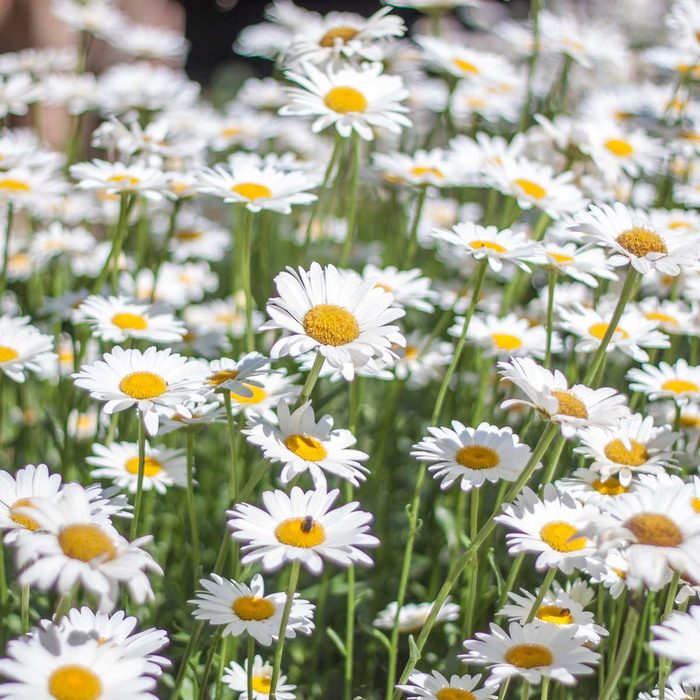
Shasta Daisy
Could there be a flowering perennial more iconic than a Shasta daisy? Its bright white blossoms are a pure delight every summer, both in sunny gardens and when cut for fresh bouquets. Many cultivars are available, including those with single or fluffy double flowers, in heights that range from one to five feet tall.
Improved varieties like ‘Highland White Dream’ and ‘Daisy May’ offer larger flowers on strong stems that won’t become top heavy when the plants are in full bloom. Although their hardiness ranges by cultivar, it generally falls between Zones 5 and 9, so read the tag carefully before you buy.
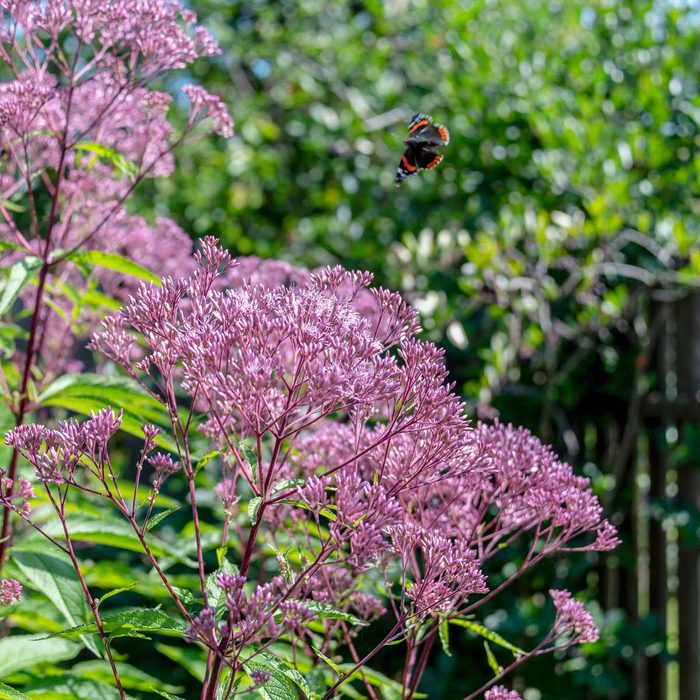
Joe Pye
If you have a low spot in your landscape where the soil is often soggy, or you’re looking to grow a living screen in Zones 3 to 8, Joe Pye is a perfect choice. This moisture-loving native perennial is ideal for a rain garden and grows vigorously to form a tall, broad mass of rugged green foliage on thick stems that can tower as high as seven feet.
Large, flat-topped clusters of fuzzy, mauve-pink flowers appear at the tips of each stem from midsummer to fall. You’ll often find more than one type of pollinator feeding on the blossoms at once, as this native plant is an important late season food source.
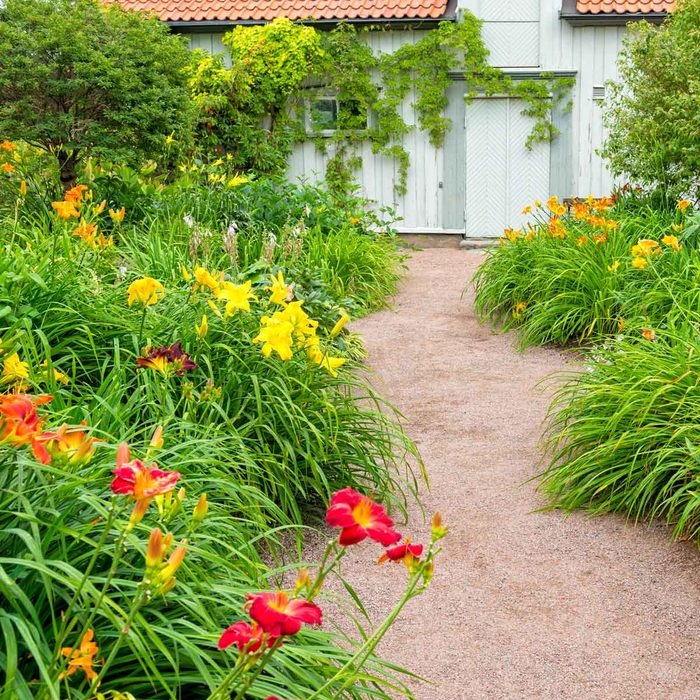
Daylily
Few other perennials bloom in nearly every shade of the rainbow like daylilies do. You’ll also find some with dynamically patterned flowers like ‘Born to Run’ or ‘Tiger Swirl.’ See in the picture how full they make a garden bed look? You can fill a lot of space with just a few plants and because they are easy to divide, you will be able to spread your daylilies around your garden over the years.
They will grow and bloom best in Zones 3 to 9 in at least six hours of sun and prefer to be watered regularly, although they are fairly drought tolerant once established. Expect loads of showy blooms in midsummer, and again in late summer on reblooming varieties.

Stonecrop
One of the easiest flowering perennials you’ll ever grow is stonecrop. Whether you’re looking to soften the edge of a retaining wall with a short groundcover like ‘Popstar’ (shown here) or need an upright clumping perennial like ‘Class Act’ to fill the middle of the border, it’s easy to find a stonecrop to fill that niche.
This hardy perennial tolerates the extreme cold of Zone 3 but also doesn’t mind the heat of Zone 9, and it will thank you for not feeding it. Unlike many perennials, this one grows strongest when you let the soil dry out a bit and don’t pamper it with special amendments like compost or fertilizer. Full sun and well-drained soil are also essential.

Black-Eyed Susan
Common black-eyed Susans like ‘Goldsturm’ can be found blooming across North America in Zones 4 to 9 from midsummer into fall. You may prefer a newer native cultivar like ‘American Gold Rush’ (shown here), which offers improved traits like far greater disease resistance, a tidier shape and flowers that won’t reseed all over the garden.
These full sun perennials also bloom well in part shade. Thankfully, deer tend to pass them by, but you may find a butterfly or two stopping by for a midday snack.

Rose Mallow
Perhaps the biggest showstopping perennial of them all is rose mallow, which is a hardy form of Hibiscus. Dinner plate-sized blossoms in shades of pink, red, magenta, lavender and white adorn these blooming plants every year from midsummer into early fall. Some, like ‘Evening Rose’ (shown here) have dark-purple foliage that will capture your attention long before the first flower opens.
These are robust, four- to five-foot tall and wide perennials that die all the way back to the ground in winter and reemerge fully again the following spring. Don’t be surprised if it is late May before the first bit of foliage shows — this perennial is a late riser.




















